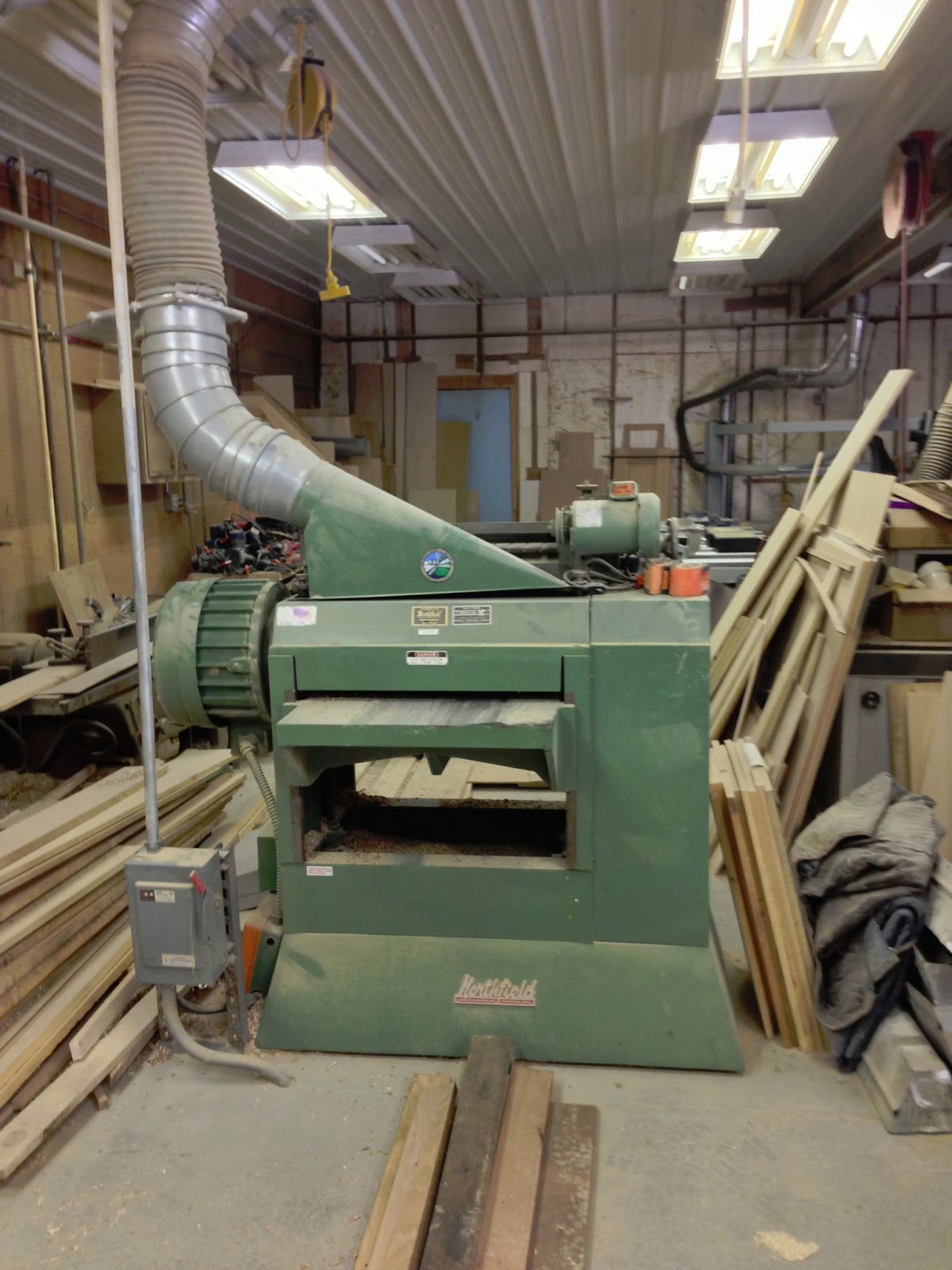 |
| Big machine, eh? |
That's my uncle's planer. It's a big BAMF of a tool. It eats up boards in a hurry and without much struggle at all. Talk about planers generally and a comparison to the one I use after the jump...
Oh, also these suckers are loud. Loud enough that they are the only thing we bother using ear protection while using. Loud noises, power tools, pretty sweet, right?
A planer makes a thick board thinner. It smooths it out in the process. When you buy lumber it's really really rough. A planer smooths out it's faces. It's one of the first things you have to do before starting to work on any project. Planers do this by having a raise-able and lower-able table mouth. You set it up to be about 1/16 or 1/32 of an inch narrower than your board, some grip wheels grab hold of the board and feed it through the tool, which contains a rapidly spinning cylinder of blades and then spits it out the other side.
Standard planer cutter heads are long solid blades the length of the planer mouth. There are usually a few on the cylinder. Better quality cutter heads are helical; there are lots of shorter blades arranged kind of like the threads of a screw (or a bit like the bent ladder shape of DNA).
One of the things a planer is good for is evening out boards you edge glued to make into one wider board.
(Typically you pay a big premium for really wide single boards, so it makes a lot of sense to glue up table tops for example) This is the picture of a table top of glued up mahogany. You can see the two different boards in it. I planed it on the big planer to even the boards out into a smooth surface.
My uncle's planer is great for this because it's got a really wide mouth/cutting surface.
That's a zoomed in picture of the planer's out-feed mouth. Anything narrower than that would go through. It's plenty wide for a lot of surfaces.
To compare, this is a picture of the planer I use (DEWALT DW735X 13" Two-Speed Planer Package
 |
| Not so big machine |
All-in-all though, this DeWALT planer is damn good for the price and size it is. Part of the balance when you don't have a big space is getting compact things or, in this case, things on roll-able platforms that let you move it around easily.


No comments:
Post a Comment